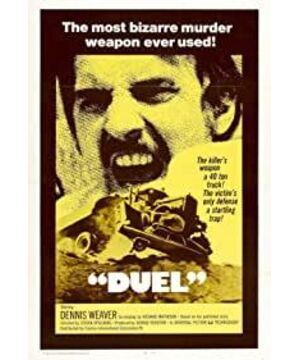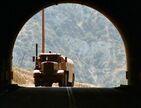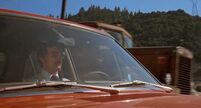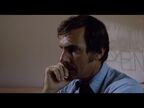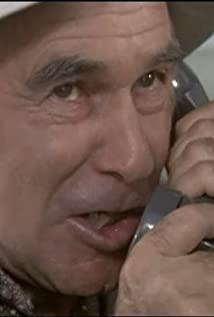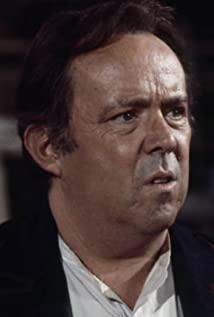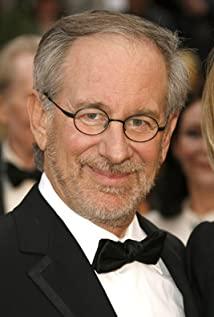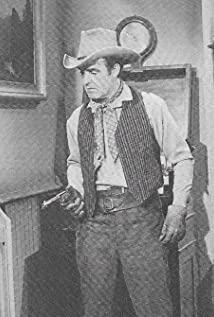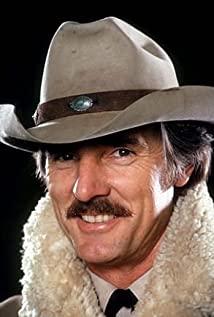As Spielberg's first feature film officially shot, "Duel", shot in 1971, is considered to be a relatively unremarkable one among his works. Perhaps because most of his films have achieved surprisingly brilliant commercial success, this low-cost road thriller originally shot for the TV station has been forgotten by mainstream audiences of this era.
From the perspective of genre and film aesthetics, "Duel" and Spielberg's other works have obvious differences in style. It has a strong independent production color, while being typified, it also carries the simple and sharp blood of the "new Hollywood movie". We can even say that if any of Spielberg’s films truly belong to a genre of film art and develop its potential for strong expressiveness, it would be "Duel".
Road Movie/Kung Fu Movie Mode
The story of "Duel" is very simple: a middle-class white-collar worker, David Mann, drove down the road, but was chased and crushed by a giant tank truck, and the two cars started a ridiculous life-and-death contest.
Road films are a very popular genre in new Hollywood movies. For example, "Bonnie and Clyde", "Easy Rider", and "Poor Mountains and Bad Waters", the masterpieces of American independent films in the 1960s and 1970s all have very distinctive characteristics of road films. New Hollywood directors hope to use the extended structure of road trips to break the traditional closed three-act narrative system of American films, bring about changes in character relationships with the gradual openness of time and physical distance, and create a new film narrative model.
"Duel" faithfully follows the formal principles of the new road film: the film has largely ignored the textual background and behavior motives of the pros and cons, only allowing the two cars to meet accidentally on the road. Even to the end, we can't see the face of the truck driver, we can only try to imagine his crazy mental state in the weird and crazy movement of the truck.
This kind of conceived arrangement allows violence, cowardice, fear and madness to develop to the extreme of absurdity in a random state, replacing the contradictions and conflicts of specific plots with abstract humanity duels. As a result, the film completely abandoned the traditional playmaking model that has been considered both the beginning and the end, and the main narrative is composed of a group of segments of increasingly intense car chasing contests. It is they who have accumulated the film's paranoia-style stubborn destructive mood, pushing it to the culmination of the final explosion.
In Hollywood in the early 1970s, such breakthrough drama ideas were not common. What's interesting is that it actually has the same narrative mode as the Hong Kong Kung Fu movies that just emerged at that time. The core theme of Kung Fu movies is to stimulate the audience's senses through distinct stylized fights to achieve an entertaining effect. For this reason, its story lines are generally arranged in a clear and easy-to-understand manner, which provides motivation for the Kung Fu scenes and serves as a cutscene. Take Bruce Lee as an example. In his first works such as "Big Brother Tangshan" and "The Raptor Crossing the River", the connection between the plots is very weak and almost broken into fragments that are not connected to each other, but it provides a sufficient and reasonable display for the action Platform, on this basis, the film uses well-designed action scenes to show Bruce Lee's personality characteristics and individual charm.
"Duel" has the same idea of characterizing the character. The main plot of the film is straightforward and simple. It even discards most of the textual dialogues used to present the characters' behavior motivation and psychological activities, and only retains the few psychological monologues of the red car driver David Mann. Screenwriter Richard Matheson (Richard Matheson) once suggested that Mann's wife should be on the road with him in the plot, and the motives of the characters should be clearly expressed through the dialogue between them. This suggestion was rejected by Spielberg. He believed that the action form designed around the road duel was enough to clearly outline the narrative process and the personality characteristics of the pros and cons. Just as Bruce Lee's iconic features do not need to be explained through dialogue, they can only be fully demonstrated in close combat.
What we see in the film is a game of fighting for roads while traveling, which has evolved into a life-and-death chasing that is at stake. The hero is desperate and frightened, and finally furiously fights back and leads the truck to a precipice. These plot evolutions and emotional transformations have been skillfully "translated" by Spielberg into various different actions of car driving-acceleration, deceleration, turning, U-turn, the eye-catching eyes of parking and waiting, and the explosion of hatred during a fierce collision. He even meticulously designed various funny anthropomorphic gestures of the big truck (including the shape of the front of the car into the shape of the face of a creature) to reflect the emotional changes of this highway giant.
All these subtle but dramatic changes are completed in the director's scheduling of "strong action" and "light text", which makes "Duel" a film with the charm of film ontology. It completes storytelling through motion images in the audience's imagination and intuitive experience, and is a true "action film".
And at a deeper level, Spielberg brought a certain absurdity that exists in contemporary society to the screen through the iconic product of the industrialization era, which was silent but crazy action: If the protagonist David Mann’s Looking at it from a perspective, human beings have become a lonely part sitting behind the "mechanical system", and he will never know the true face of the huge pressure to crush it. In this way, "Duel" is another "Kafka "Castle"" fable that takes place on the road.
Pet monster intention
In the 1960s and 1970s, the "Godzilla" series of movies produced by Japan's Toho has become quite popular among American movie fans. Hollywood is very keen to copy this "unexplainable creatures suddenly appear in contact with humans" plot mode. In Spielberg's works, the film "Jaws" that made him famous and the huge commercial success "Jurassic World" can catch a glimpse of the "Godzilla type", and even the "Third Kind of Contact" "And "ET Alien" both take humans to examine Godzilla's perspective.
In "Duel", Spielberg deliberately prevented the truck driver from appearing, and we could only catch a glimpse of his silhouette sitting in the cab and his arm extending out the window. In this regard, Spielberg explained: the most irresistible fear comes from the nameless fear, so he wanted to portray the truck rather than the driver as the main negative character of the film. This setting gives the movie’s villain truck/driver a trace of suspense that cannot be penetrated (in fact, until the end of the movie, we have no way of knowing its/his real mental activity track), and it makes the movie and Hitchcco in the core. The Ke-like horror and suspense types come down the same line.
On the outside, when we look at the rusty truck with a front face that is close to the facial features, we will realize that Spielberg actually gave life to the truck itself. And wisdom makes him a monster that can think, feel and express. During the interview, he also confirmed that the film uses the monsters in the Toho series to portray the image of the truck, but it replaces Godzilla with an eighteen-wheeled tanker truck.
Therefore, what we see is a post-modern monster with multiple personality traits, which is galloping on the highway. It uses the attitude of the game to crush the same kind it believes-the red car-brutally and ruthlessly, but at the same time it will also use some brainstorming tricks: for example, when the opponent can't see the incoming car, it signals overtaking, which leads to Xiaohong. The car almost collided with other oncoming vehicles. And just when we thought it was cold-blooded and ruthless, it reached out to help restore the road on top of the broken school bus.
Some small details that are easily overlooked by the audience are that whenever David Mann gets out of his red car and chases a big truck on foot, the latter will start the engine as if frightened and leave; and when the big truck is Two times when traveling side by side with the same behemoth mechanical movement device-the train-both sides would whistled each other, as if they had met the same kind and greeted them in a friendly manner. We gradually understand an interesting setting that Spielberg buried in the film: the target of the truck monster's violence is actually a red car that is cited by it as the same but much weaker than it, officially under this recognition , It also exchanges appreciative greetings with the train that is also a mechanical behemoth; but whenever humans appear in front of it, it will feel a little uneasy, so it instinctively flees.
So this mechanical monster has some of the characteristics of a large pet that we are familiar with: it is willful, casual, violent, and it rolls around like a baby from time to time, but it is a little afraid of humans. Spielberg created an image of a giant mechanical pet that is unique in movie history with a very interesting and imaginative tone. From its perspective, "Duel" is essentially a game that bullies the weak and the same with a playful mentality. Mann, who was sitting in the car, was forced to get involved in this violent duel that had nothing to do with him. He had no choice but to manipulate the red car to participate in the duel with the spontaneous human initiative to save himself.
At the end of the film, when the truck monster fell off the cliff against the wreck of the red car, Spielberg deliberately added a faint wailing from the beast to the sound effects, implying that this wayward monster realized that he was out of control. Despair. As the same kind of machinery, the truck and the car died in a duel, and David Manze jumped on the cliff and wept with joy for the rest of his life. When he sits in the sunset and empty, we can feel that what has just ended is not just a simple road chase, but an occasional life-and-death contest between humans and another unknown species with different forms and thinking modes. . From this perspective, "Duel" seems to have brought a hint of science fiction movie atmosphere.
Origin and influence
In addition to Kafka's absurdity and monster intentions, "Duel" also left a lot of room for different interpretations. Some people regard it as a metaphor for the industrialized capitalist society to ruthlessly crush individuals with mechanical systems, while others deconstruct it as a fierce counterattack of male-dominant male consciousness: the protagonist Mann in the film has been cowardly and weak, and his wife was killed the day before. He didn't dare to speak when he was molested, so on the second day of the journey, the male part of his subconscious was awakened (using the truck as a carrier) and carried out a wanton vent. Spielberg also left some clues for understanding: In the car radio program at the beginning of the film, there is a large confession about the low status of the male lead, and the English pronunciation of the male lead's name Mann is similar to Man is exactly the same.
Whether these understandings are accurate or not, what makes us surprised is that there are so many possible meanings behind a seemingly simple low-cost highway chase action movie. It shows Spielberg, who was a young director back then. The amazing talents possessed.
It should be said that because Spielberg, who was only 24 years old at that time, did not have such a clear plan for the future style of his works, it made "Duel" full of various potential possibilities. It has both allegorical absurdity and mysterious psychological suspense; he not only has the basic structure of road movies, but also borrows image expression methods from monster movies; and finally uses action movies as the ultimate expression of the whole drama conflict. form. Many of Spielberg's subsequent films can be found in this debut work, especially those heavyweight science fiction monster disaster films that made him famous, almost certainly originated from the anthropomorphic car in "Duel" Of heavy-duty tank trucks.
But it is a pity that the sharpness and unrestrained spirit of exploration that came from the new Hollywood gradually disappeared in his subsequent films. Like most talented filmmakers who were brought into the arms of Hollywood, while achieving great success, their ways of thinking and expression have gradually been "domesticated" by the commercial and industrial systems. For Spielberg, this trend is particularly obvious-three years later in "Jaws", which is almost the same thriller genre, the challenging multi-faceted potential of "Duel" has disappeared, leaving It's just a thrilling story that is wonderfully told and skillfully performed.
Looking back, "Duel" is even more valuable. From it, we can faintly glimpse the talent of Spielberg who has not been "kidnapped" by money and success.
View more about Duel reviews


